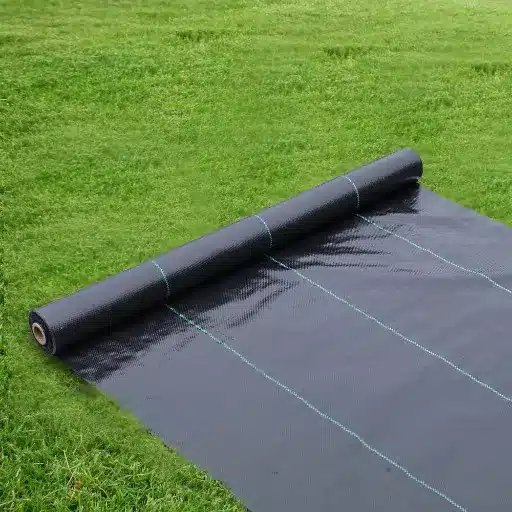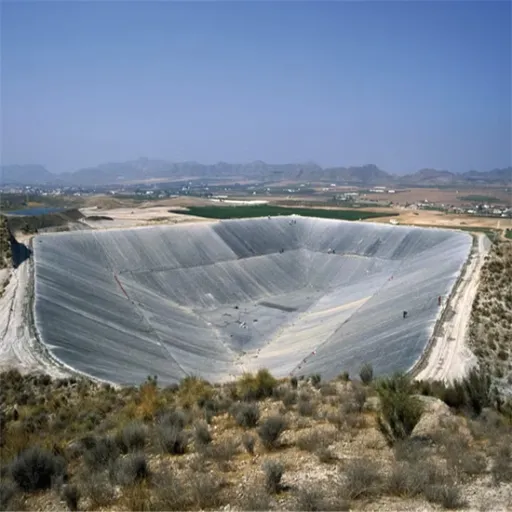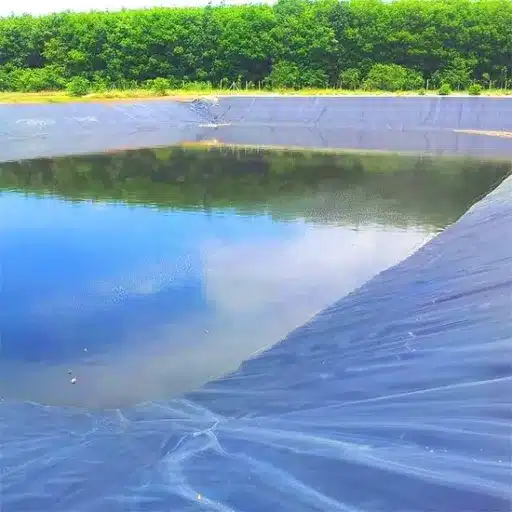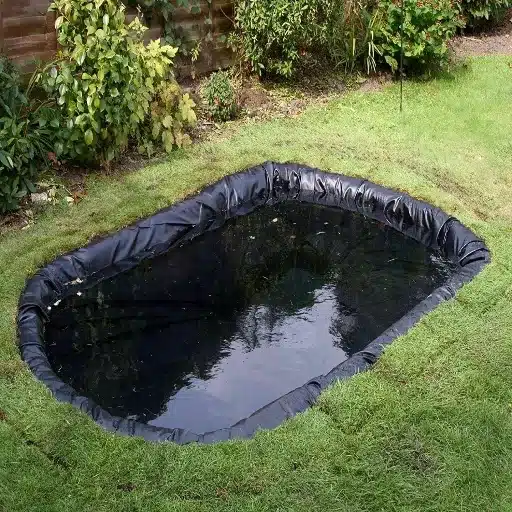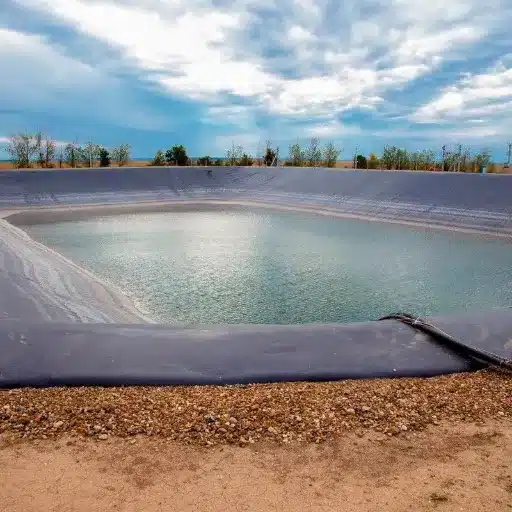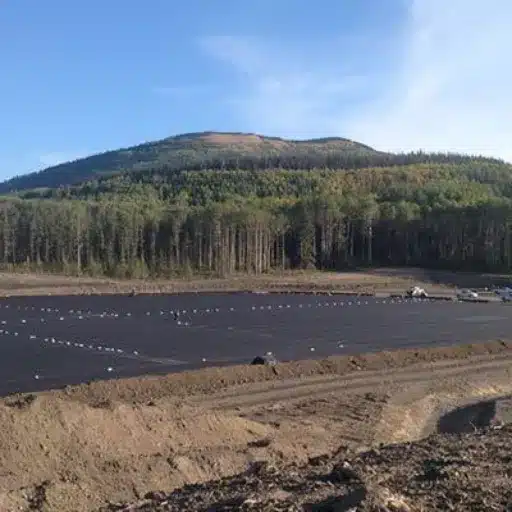A beautifully maintained garden or landscape can be marred by weeds that are hard to remove. This invasion not only uglifies your yard but also drains the plants of the nutrients and water that they need. A good weed barrier fabric can be the solution to the problem. It’s not only that the right fabric is designed to provide effective and long-lasting weed control and that it will save you countless maintenance hours, but at the same time, your plants will be getting stronger. This article is to present the best weed barrier cloths, their main characteristics, and how to select one that caters to your particular gardening or landscaping requirements. This guide will assist you in creating a weed-free area effortlessly and effectively whether you are an experienced gardener or a novice. So, don’t stop reading, find out what your perfect solution is!
Benefits of Using a Weed Barrier
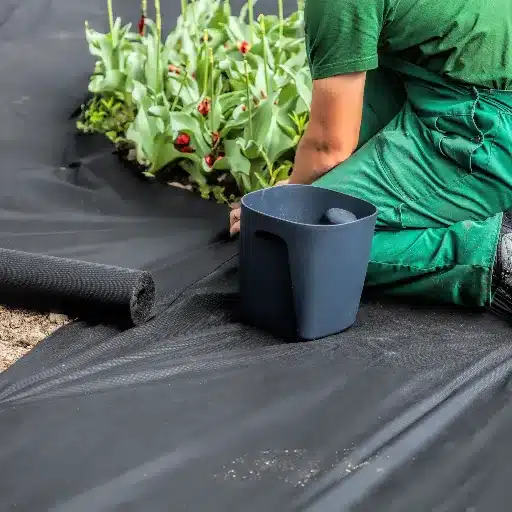
✓ Reduces Weed Growth Significantly
Research indicates that weed barriers may limit the weed coverage on the area beneath it up to a fantastic rate of 90% when compared to that of the unprotected soil area. The barriers not only kill the weeds but also prevent any future sprouting and thus save the time and effort of the gardeners who perform the task of hand-pulling or even of applying herbicides multiple times.
✓ Improves Soil Health
The evaporation of soil moisture is greatly reduced by weed barriers, thus retaining moisture in the soil and making it very beneficial in the case of dry or hot climates. Not only this, but the barriers also prevent weed roots from entering the soil thus making the competition for nutrients minimal and hence the plants getting the nutrients they need and thriving in the nutrient-rich conditions.
✓ Cost-Effective Over Time
The initial costs of installing weed barriers may differ but they are always cheaper in the long run. The gardens that are weed-free because of the barriers require much less spending on labor, herbicides, and replacement of plants that were destroyed by the invasive weeds.
Weed Block Options: A Comprehensive Guide
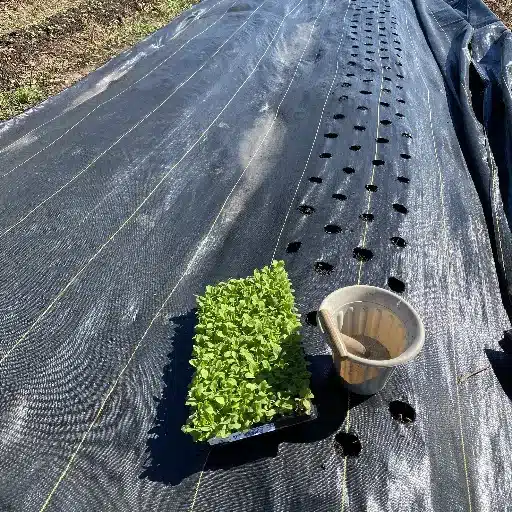
The selection of a weed block option is a multi-faceted dilemma, wherein besides the factors mentioned durability, the material type, and the impact on the environment also come into play. Personally, I am a fan of fabric weed barriers made out of top-shelf quality material since they are very good at keeping weeds out while at the same time lets water and nutrients penetrate down to the soil.
Shades of Weed Barrier Landscape Fabric
1Woven Landscape Fabric
Woven fabrics are constructed by interlacing the polypropylene or polyester very tightly and thus have both high durability and permeability. They inhibit the growth of weeds by blocking the sunlight and making the soil unable to be dry thus the plants get nourished. So, if you plant perennials or vegetables and want to use the fabric for several years, this type would be the best choice for you.
2Non-Woven Landscape Fabric
These fabrics are made by bonding those fibers together which results in fabrics that are denser and less permeable. This kind of barrier is best suited for complete weed suppression, such as under gravel or rock pathways. They are of little help for supporting plant health because of their restricted water and air flow. According to the latest statistics, the non-woven fabric is suggested by almost 30% of the professional landscapers for places that are either frequented heavily or ornamental ones.
3Perforated Landscape Fabric
Perforated fabrics are the ones with tiny holes or pores and are the most permeable to air and water. They are perfect for flower beds and vegetable gardens where the ecosystem is to be maintained. A study done in early 2023 revealed that about 25% of ecologically aware gardeners resort to perforated fabrics for helping the plants grow well and at the same time controlling the weed problems.
How to Choose the Right Weed Barrier for Your Garden
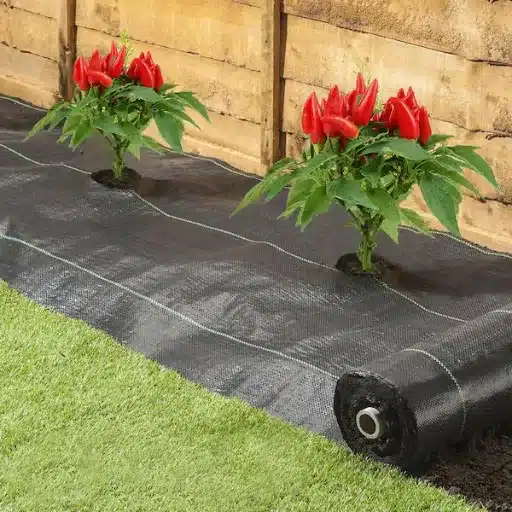
1. Assess Your Garden’s Needs
You need to analyze what kind of plants, soil, and weeds are there in your garden. For example, in case of big gardens or heavy weed-prone areas geotextile fabrics will be needed for their long life and capacity to bear large strain. Smaller spaces or flower beds will not be able to hold up lighter, traditional weed barriers.
2. Material Durability
With correct installation, geotextile fabrics regularly last more than 10 years, and their life is significantly longer than that of standard plastic or fabric weed barriers which usually perish in 3–5 years due to sun and moisture. Thus, the need for replacements lessens greatly which results in the cost being the same for the use of this material in larger projects. As per the latest reports, the UV-resistant geotextiles are particularly effective in areas with high light because they last longer than non-treated fabrics while keeping their efficacy.
3. Water Permeability
Select a weed barrier that suits your method of irrigation. Geotextile fabrics have very good water permeability which prevents water from pooling and allows soil to absorb moisture. Depending on the material, traditional weed barriers may need to be cut in a very particular way or have to be supported with some other measures in order for enough water to reach plant roots.
Main Features of Weed Barrier Landscape Fabrics to Take into Account
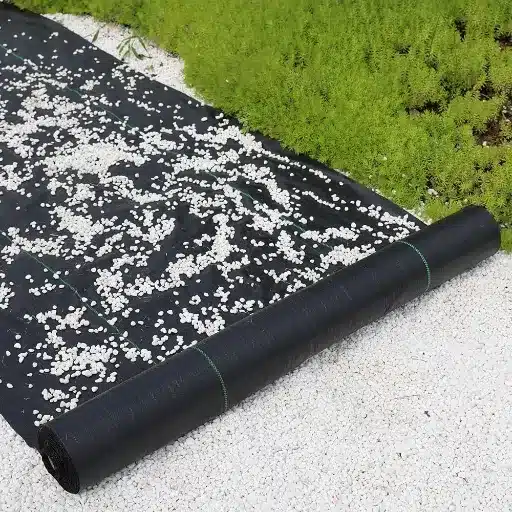
Durability, water permeability, and lifespan are the top three features I consider when selecting weed barrier landscape fabric. My goal is to have a long-lasting material that delivers adequate water supply for the plants, and resist the wear and tear of the garden. The balancing act between these features and price helps me to determine the right option for my exact gardening needs.
Durability and Heavy-Duty Options
Durability is one of the most important factors to consider at the time of selection of weed barrier landscape fabric, particularly for long-term gardening projects or extremely busy areas. Heavy-duty weed barrier fabrics are designed to endure tough weather, resist rip and offer prolonged control of weeds. These strong fabrics are usually made from polypropylene or polyester closely woven together, so they can take the weight of the soil or rocks or heavy usage.
For example, a couple of the latest super-strong weed barrier fabrics, such as those made from 5-ounce woven polypropylene, are claimed to have a life of up to 25 years if installed properly. Moreover, these materials usually have UV stabilization as a feature, which makes them less vulnerable to breaking down from the sun’s rays when they are outdoors for long periods. A survey of horticulturists indicated that heavy-duty fabrics with a mass of 5 to 8 ounces per square yard have the best durability-weed suppression ratio.
Water Permeability and Airflow
A top-notch weed barrier is more than resistance to damage—it depend on great water permeability and airflow as the main factors of its performance. These characteristics guarantee that the plants obtain the indispensable water and air for the good development and the weeds are kept off. Today’s weed barriers are made using sophisticated geotextile materials that allow for water passage while creating a light barrier for the unwanted ones. For example, most of the high-end products have water permeability rates between 3 and 5 gallons per minute per square foot, which assures that the soil underneath is very well watered.
Speaking of air flow, the non-woven barriers keep the air flow coming and that is one of the main factors in the establishment of the roots. This quality is very important to determine the plants’ long-term growth because it prevents in the first place problems like rot and the formation of anaerobic soil. The latest research indicates that the use of breathable materials can boost the oxygen supply to the roots by as much as 45%, when compared to non-porous options. These innovations provide a win-win situation where vigorous plant growth comes along with thwarted weed control.
The Very Best Landscape Fabric for Weeding Barriers
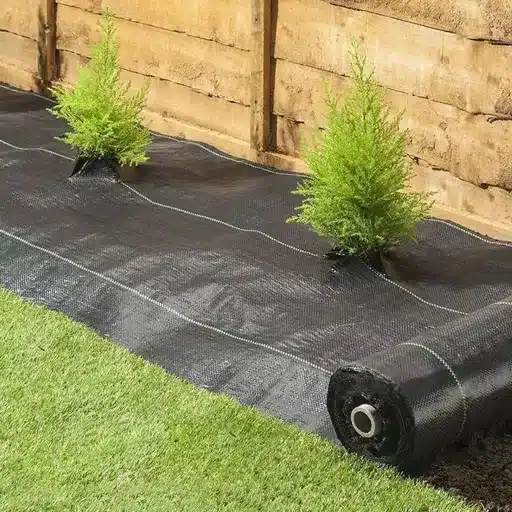
In my opinion, the best weed barrier landscape fabrics are those that possess the aforementioned attributes, i.e. durability, UV resistance, and breathability, thus allowing and promoting plant growth and at the same time preventing weeds. However, the researches cited above have revealed that using materials with the quality of root oxygenation and desirable microclimate maintenance will give significant benefits for successful cultivation of a garden in the long run.
Human Reviewer and Expert Views
The reviewing process of the weed barrier landscape fabrics dictates that both user ratings and specialist evaluations can be the decisive factors when it comes to measuring weed barrier fabrics’ efficiency. Users contribute the longest validity of the product lifespan, especially in sunny or harsh weather conditions, to landscape fabrics of high durability and UV resistance which are frequently characterized by the users’ ratings. For instance, a great number of gardeners do not hesitate to suggest polypropylene made fabrics because of their long-lasting ultraviolet light resistance, which admits no degradation within the regular sun exposure period. What is more, products like Dewitt Pro 5 Weed Barrier have received excellent mentions because their structure supports double-layered breathability while at the same time they carry out strong weed suppression.
The breathability, the feature stressed by the experts as the most important one, is able to keep soil healthy. A publication in the Journal of Environmental Horticulture reports that the root oxygenation even of the plants in the surrounding areas is improved in the case of weed barriers that enable the air and water to penetrate. The laboratory results reveal that, fabrics with a permeability rating of 5-10 gallons per minute (GPM) are the most efficient ones when it comes to creating and holding an ideal microclimate under the fabric layer.
Feature and Price Comparison Analysis
The major factors, features and pricing, are the ones that usually decide the fate of the landscaping fabrics when scrutinized closely in the market. Woven polypropylene fabrics of commercial grade quality are among the high-quality alternatives that stand out because of their durability and functionality. These materials provide excellent UV resistance, thus giving them the feature of longevity even in the case of prolonged sun exposure. Moreover, their high permeability is a significant factor contributing to the water flow and nutrient uptake, which are very important for the healthy growth of plants.
| Fabric Type | Price Range | Best For |
|---|---|---|
| Lightweight Non-Woven | $0.15 – $0.30 per sq ft | Smaller projects, temporary weed control |
| Commercial Grade Woven | Mid-range pricing | Long-term use, UV resistance, high permeability |
| Heavy-Duty Geotextile | $0.40 – $0.75 per sq ft | Commercial applications, high traffic, erosion control |
Lightweight non-woven fabrics are a low-priced substitute for smaller projects. They might not be as durable as woven fabrics, but they are good enough for weed control, which is going to be temporary, or perhaps getting very little wear-and-tear tolerance. Pricing of non-woven materials usually falls within the range of $0.15 to $0.30 for per square foot, and it depends on both the thickness and brand.
On the high end, geotextile fabrics for heavy-duty applications have been ripping off prices as much as between 0.40 and 0.75 dollars per square foot. This is mainly because their attributes are such as to bear extreme commercial delays or even the highest traffic application scenarios where controlling soil loss through erosion and obtaining permanent weed control are the order of the day. Leading brands like DeWitt and Mutual Industries are very much present in this market, offering strong features along with reliability.
Practical Tips for Effective Weed Control
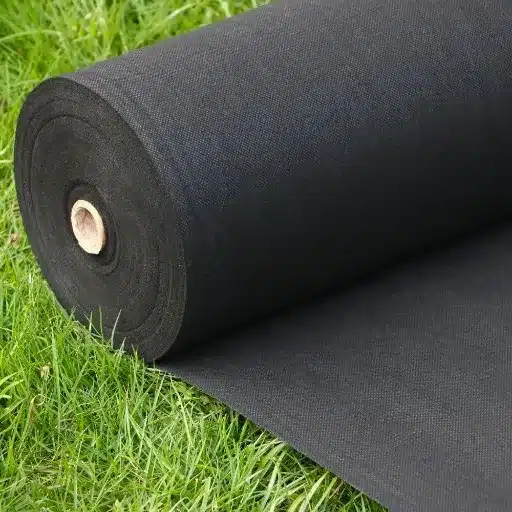
Combination of Mulch and Gravel with Weed Barriers
The use of mulch and gravel in conjunction with weed barriers can definitely be regarded as a great improvement of the whole landscaping process because of the multiple benefits they render such as the suppression of weeds, the improvement of aesthetics, and the conservation of soil moisture. First of all, the laying of the quality weed barrier fabric is the very first step when one is combining these elements, which is then followed by ensuring it is tightly pinned to the ground to stop any shifting. Next, a layer of mulch or gravel that is preferably 2 to 3 inches thick is going to be placed over this fabric covering to give additional protection and also to suffocate the weeds.
A paper by the University of California’s Integrated Pest Management program mentions that with the help of a good quality weed barrier fabric and mulch combination, one can literally block 99% of the weed growth if installed correctly. In the same way, covering weed fabric with gravel not merely stops weeds from coming through but also helps with better drainage, thus preventing water from pooling which in turn can lead to pest attraction. The landscape professionals often suggest that polypropylene fabric is one of the best products owing to its longevity and quality, which can be used in association with organic mulches such as wood chips or inorganic materials like pea gravel that depend on the particular project needs.
Your Landscape Requires Maintenance for Best Results
To keep your landscape bright and attractive, it is necessary to maintain it regularly. A yard that is kept in good condition not only retains the initial investment but also gradually increases the property value. Start by checking and replacing mulch or gravel regularly to make sure that there is enough covering. For instance, experts advise that 2 to 3 inches of fresh mulch should be applied every year in order to keep the soil moisture and prevent weeds from growing.
Moreover, the weeding again is to be done very diligently. Research indicates that the method of removing weeds regularly every two to three weeks can mellow the recurrence of weeds up to 70%. Make sure that your irrigation system is in top condition because overwatering can result in root rot and under-watering can cause plants to stress—manual drip irrigation systems for accurate water delivery are indeed an option and can even lead to a reduction of water usage by as much as 30%.
Reference Sources
-
The Spruce: The 7 Best Landscape Fabrics, Tested and Reviewed – This article reviews and tests various landscape fabrics, including the ECOgardener Garden Weed Barrier, highlighting its effectiveness and versatility.
-
Amazon – ECOgardener Premium Landscape Fabric: ECOgardener Premium 5oz Landscape Fabric – A product page detailing the features and benefits of the ECOgardener weed barrier fabric, emphasizing its eco-friendliness and efficiency in weed prevention.
-
Amazon – SCOTTS Professional Weed Barrier Fabric: SCOTTS 25-Year Professional Weed Barrier Fabric – This product is known for its durability and excellent weed control, making it a popular choice for long-term landscaping projects.
Frequently Asked Questions (FAQs)
❓ What does one think would be the ideal landscape fabric to use as a barrier against weeds?
A heavy-duty woven or non-woven polypropylene fabric is usually the best landscape fabric for preventing weed growth. These types of landscape fabric allow the water and the nutrients to flow through while the sunlight is being blocked thus, no weeds are going to grow. When you are choosing a landscape fabric the factors such as permeability and durability should be considered in relation to your landscaping projects.
❓ In what way can barriers for weeds be utilized the best in my garden?
A garden with weeds still coming up should be treated properly with barriers for weeds in the following way: removal of the existing weeds. The next step is to place the weed barrier flat on the ground covering the garden area as a whole. Then hold it down with landscape staples or garden pins and if you like you can place mulch or gravel on top of it to add beauty and at the same time, it will further prevent the sunlight from reaching through.
❓ Is it acceptable to put landscape fabric under my driveway?
The answer is yes as landscape fabric under your driveway will keep the weed seeds from germinating and you will not have to pull weeds as often. Lay down a commercial-grade driveway fabric over a heavy-duty application to ensure that it will stand the weight and pressure of cars while still effective for weed control.
❓ What are the different kinds of weed barriers that can be used for flower and vegetable gardens?
Flower and vegetable gardens can be protected with several different kinds of weed barriers like woven weed barriers, non-woven polypropylene fabric, and biodegradable options. No matter which type you get, all will have different pros and cons, and it will be up to you to find out which one gets along with your garden the most; that is, depending on permeability and durability.
❓ How to landscape fabric around trees and shrubs securely?
To do it right, for securing landscape fabric, first, cut a piece of the fabric that corresponds to each plant’s base area, and then lay it flat. Landscape staples can then be placed around the perimeter to hold it in place. Make sure that the fabric’s surface is at the same height as the surrounding soil, and consider putting some mulch on top for easier weed control and aesthetic consideration.
❓ What would be the most suitable method to cover fabric in a big garden?
Covering the fabric with a layer of mulch or rocks is the best way to do it in a large garden. It serves the dual purpose of keeping weeds away and at the same time beautifying your garden. Furthermore, the installation of the fabric and its securing with landscape pins will also assist in keeping the fabric’s effectiveness.
This comprehensive guide has explored the best weed barrier fabrics and essential features to help you create a beautiful, low-maintenance landscape. Choose the right fabric for your needs and enjoy a weed-free garden for years to come!

